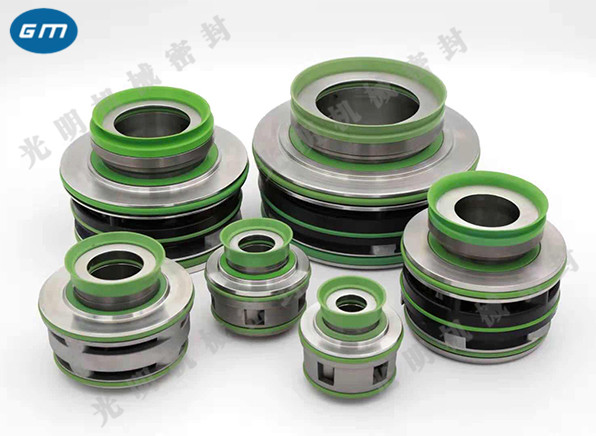Mechanical seal for kettle The anti-corrosion work is very important. Today, I would like to share some common knowledge about the anti-corrosion of non-metallic rings:
1. Graphite ring corrosion. There are three reasons for the corrosion of resin impregnated impermeable graphite ring: first, when the end surface is overheated and the temperature is greater than 180oC, the impregnated resin will break away from the graphite ring, reducing the wear resistance of the ring; Second, if the impregnated resin is not properly selected, the establishment of the sealed cooling system is mainly due to the fault of material selection. The passive film of film-forming corrosion usually has the characteristics of maintenance effect, but the passive film on the surface of the materials used for metal sealing rings, such as stainless steel, cobalt, chromium alloy, etc., is damaged in the end face friction, and it is difficult to generate a new film under anoxic conditions. It is necessary to select corrosion resistant impregnating resin, select high-pressure impregnation, and add the depth of impregnation.
2. Oxidation of graphite ring. In the oxidizing medium, when the end face is dry rubbed or poorly cooled, the temperature of 350~40o ℃ can make the graphite ring react with oxygen, attack CO, gas, and make the end face rough, or even crack. Under the combined effect of chemical medium and stress, non-metallic rings will also break.

3. Polytetrafluoroethylene( PTFE gasket )Corrosion of sealing ring. Chemical changes will occur in the medium, which will also reduce the wear resistance; Third, the resin impregnation depth is not good. When the impregnation layer is removed, the abrasion resistance will be reduced. For F4 filling, such as glass fiber, cracks first appear in the thin area, then develop in depth, and break. The sealing ring cracks are usually radially divergent, so one or more cracks may occur. Graphite powder, metal powder, etc. to improve its temperature resistance and wear resistance. The corrosion of the filled F4 ring mainly refers to the selective corrosion, dissolution or disintegration damage of the filling. For example, in hydrofluoric acid, glass fiber molecules are thermally corroded, so what to fill should be determined according to the specific situation.











